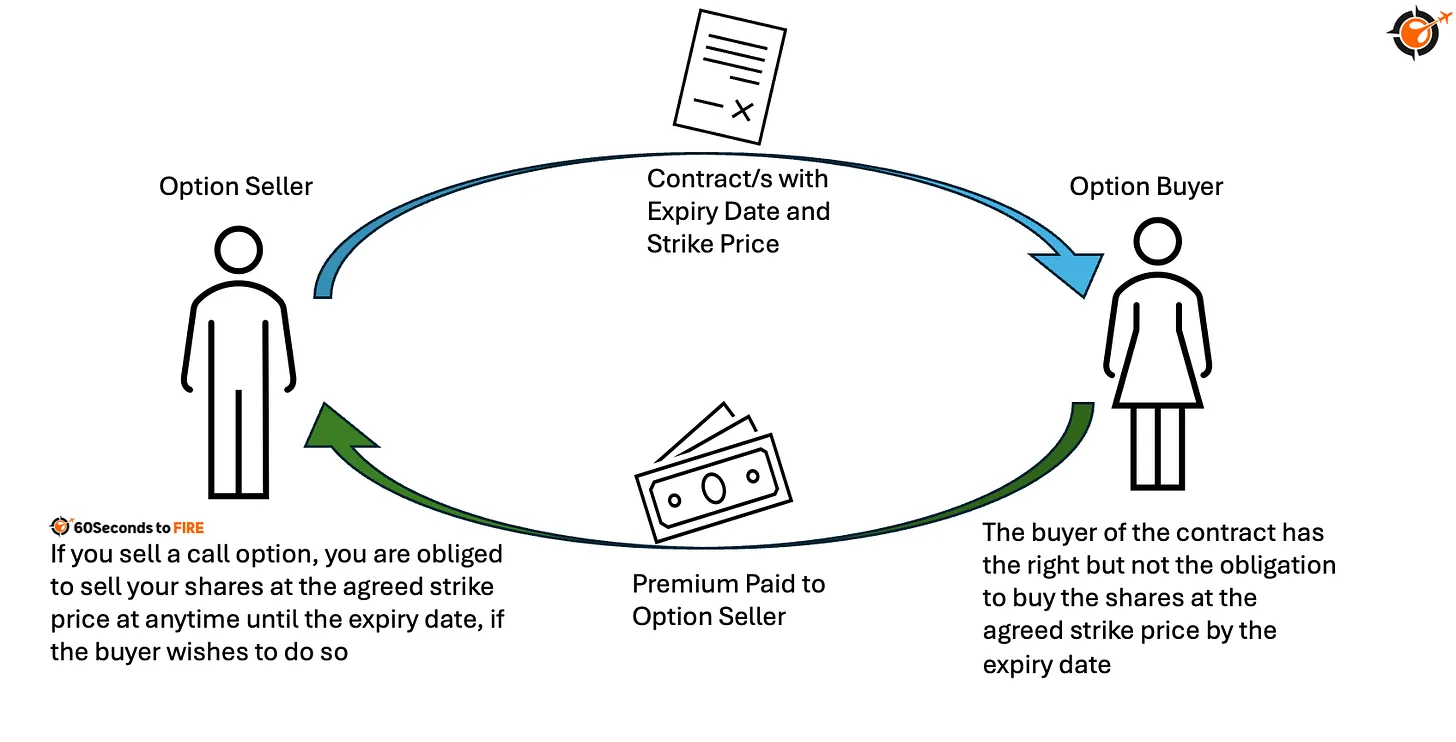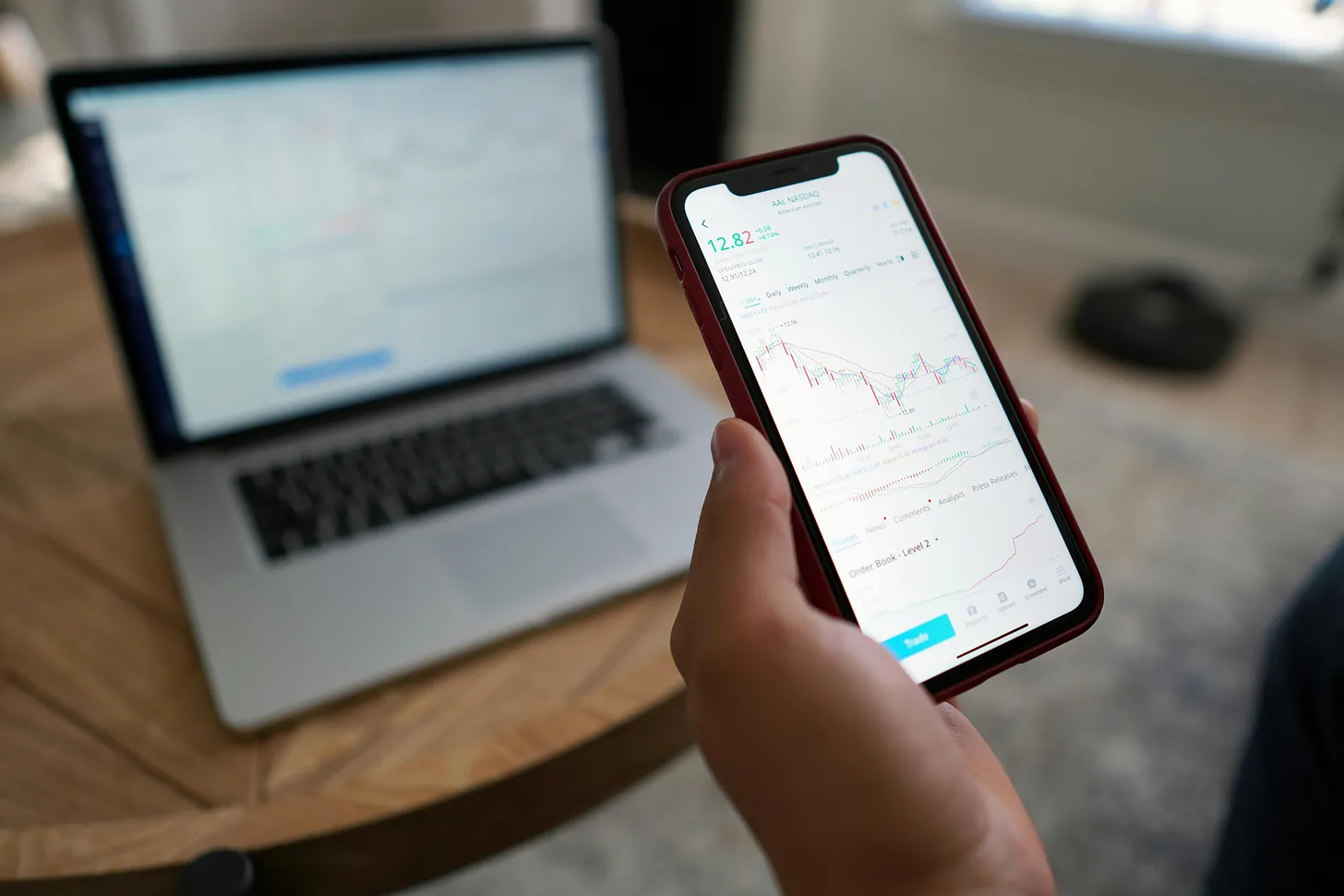Discover the Power of Selling Options to Build a Reliable Income Stream

Where It All Started
For the past three years, I’ve been trading options against my share portfolio to generate steady monthly income, helping to offset my expenses—and fund my hiking addiction. This path wasn’t where I began; I was initially focused on crypto investments. However, a chance meeting with an options trader during a walking tour in Slovakia opened my eyes to the potential of selling options as a way to cover my monthly costs and keep up with my adventures. That encounter led me to dig deeper into options as a sustainable income strategy.
In September 2021, I set a goal to spend 30 minutes each morning learning as much as possible about selling options. My aim was to build enough knowledge and confidence by January 1st to decide whether this strategy could work for me. When January arrived, I felt ready to push ahead. I opened a brokerage account in the US, starting with an initial deposit of $50,000 USD. This felt like a manageable way to test the waters, track my progress, and learn from any mistakes along the way.
In the first month, my account returned $1,800 in premium, or 3.6%, which was an encouraging start. Buoyed by this result, I moved more funds from crypto into my share portfolio. The following month, I earned a 2.4% return on the expanded portfolio, which covered my monthly living expenses in Panama. With this success, I felt confident about transitioning out of crypto entirely to focus on options trading.
But before diving further into my experience with options, it’s important to first explain what options are and why selling them could be a smart way to generate consistent “passive income.” This strategy has the potential to support your lifestyle while still allowing your stock portfolio to grow. The added power of options trading for me was that it involved a U.S.-based portfolio, so all my monthly premium was in USD. This allowed me to travel and live in countries with weaker currencies, where my dollars stretched significantly further—geo-arbitrage at its finest.

Passive Income Disclaimer
Now, I can already hear people getting offended by my use of the term “passive income.” “If you have to make trades and watch your stocks, it’s not really passive, is it?” Yes, you do need to monitor the market—but not obsessively. Understanding the general market direction is essential, and depending on your strategy and risk tolerance, this will determine how much attention you need to give daily. Personally, I spend about 10 minutes each morning checking in on my portfolio. If I’m not making any trades that day, I simply log out and get on with the rest of my day. If you were to use quarterly options, you might only need to check in for 10 minutes a week. Everyone’s definition of passive income varies, but for me, passive income means I can wake up, grab my phone, and generate income without even getting out of bed.
The Focus
This is a vast topic, and not everyone will grasp it right away. That’s why, in this article, I’ll only discuss selling covered calls. If you want to learn more about options trading, feel free to leave a comment below and let me know what specific topics you’re interested in. I’ll cover other areas of options trading, like selling puts, buying calls and puts, and strategies such as the Wheel or the Iron Condor, in future articles.
If you’re thinking about retiring abroad and looking for ways to supplement your income, selling covered calls might be an attractive opportunity. Covered calls are one of the most popular options strategies, especially for those aiming for a steady stream of income without diving too deep into complex options trading. By leveraging a portfolio of stocks, you can use covered calls to generate a regular, potentially tax-efficient income, supporting your lifestyle overseas.

In this article, i’ll walk through the basics of covered calls, explore how they generate income, and discuss potential risks. To make things easier, let’s start with a quick glossary.
Glossary
Option: A contract that represents 100 shares of a stock. For instance, if you own 100 shares of Apple, you can trade a covered call option on Apple.
Covered Call: A strategy where you own shares of a stock and sell a call option on those shares to earn premium income. This approach can provide extra income on shares already in your portfolio and is my favourite way to pay for my monthly expenses, university and travel.
Call Option: A contract that gives the buyer the right, but not the obligation, to purchase 100 shares at a specific price (the strike price) before a set expiration date.
Strike Price: The predetermined price at which the buyer of the call option can purchase the stock. If the stock’s market price exceeds this strike price, the buyer may choose to buy the shares at a discount.
Premium: The income received from selling a call option. This premium is paid to you upfront and is yours to keep, regardless of the option’s outcome. Its this premium income that you can use to pay for life things or re-invest into your portfolio to supercharge its growth.
Expiration Date: The date by which the buyer must decide whether to exercise the option. After this date, the option contract expires and is no longer valid. There is a science to this in order to get the best returns but i’ll write more about it in another article if there is enough appetite for it.
Underlying Stock: The shares you already own, against which you sell the call options. This underlying stock acts as collateral for the covered call.
In the Money (ITM): When the current stock price is above the strike price, meaning the option buyer could profit by exercising the call. This would likely result in your shares being sold at the strike price.
What is a Covered Call?
A covered call is a straightforward options strategy. It involves holding a stock you already own (the “covered” part) and selling a call option on that stock. Selling a call option gives another investor the right to buy your shares at a specified price (the strike price) within a certain timeframe. In return, you earn a premium—a payment from the buyer.
Think of it like renting out a house. You own the property (the shares), but instead of selling it, you “rent” it to someone else for a fee (the premium). If the renter (option buyer) decides to buy, you sell at the agreed-upon price; otherwise, you keep the house and continue collecting rent each month.

How Can You Use Covered Calls to Generate Income?
Covered calls can provide regular income, depending on the expiration date of the options you sell. Here’s how to use them:
- Select the Right Stock: Choose stocks with a stable or modestly rising price. Stocks that are volatile could lead to a higher chance of the option buyer exercising the call, which might not align with your goal of holding onto the shares long-term.
- Sell Call Options Regularly: By selling one-month call options, you can generate a recurring income from the premiums. For example, if you own 100 shares of a $50 stock and sell a one-month call with a strike price of $55 for $1 per share, you earn $100 in premium (100 shares x $1).
- Reinvest the Income: You can use the premiums to cover living expenses abroad, reinvest for compound growth, or fund other investments to grow your portfolio further. For me personally I re-invest between 30 to 50 percent of my options income to purchase more shares. Once I accumulate another 100 shares, I then sell covered calls on it. This way, my portfolio continues to grow along with my options income.
Risks Associated with Covered Calls and How to Mitigate Them
While covered calls can be lucrative, they come with risks:
- Potential for Limited Upside: By selling a call, you cap the maximum price at which you can sell your shares. If the stock price skyrockets, you miss out on higher gains. Mitigate this by remembering that you chose the Strike Price in the first place and you were happy with it then.
- Possibility of Being Assigned: If the stock price rises above the strike price, the buyer may exercise the option, forcing you to sell your shares at the strike price. Mitigate this by choosing a strike price above your cost basis for the option you are trading to ensure that even if the shares are called away, you still made a capital gain and profit from the premium.
- Stock Price Decline: A drop in stock price could mean you’re holding shares that have depreciated, though you still keep the premium. Mitigate this by choosing well-established stocks or ETFs with solid fundamentals.
- Education: Learning about your new investment strategy is the best mitigator of risk in my humble opinion. The more you can learn about the market and options in general the less risky it will feel to you.
The Success Rate for Options Sellers
Selling options, especially covered calls, has a favourable success rate compared to buying options. Data shows that between 70 to 80 % of Covered Call contracts expire worthless. Meaning the writer of the call (you) is then free to write another contract and generate more premium on those same shares.
What’s a Good Monthly Return to Aim For?
The ideal monthly return depends on your risk tolerance and financial goals. Generally, a 1-3% return on your stock’s value is both achievable and sustainable for most investors. For example, if your stock portfolio is worth $10,000, a $100 to $300 monthly premium aligns well with a steady income strategy. Although this might seem modest, it compounds over time, providing a reliable cash flow to help cover retirement expenses abroad without taking on excessive risk.
From a Geo-FIRE perspective, if you’re working with a portfolio valued around $300,000 USD (approximately $455,000 AUD or $502,000 NZD), you could potentially generate around $6,000 USD per month. This income would comfortably support a lifestyle in many countries, providing a solid financial foundation for enjoying retirement abroad.

Covered Calls in Action: A Scenario
Imagine you’re holding 200 shares of XYZ Corporation, a stable, dividend-paying stock currently valued at $50 per share. You decide to generate income by selling a call option. You sell a one-month call option with a strike price of $55 for $1.50 per share. Here’s what happens:
- Income Generation: You receive $300 in premium income (200 shares x $1.50). This premium is yours to keep, no matter how the stock price changes.
- Outcome 1 (Shares Below Strike Price): If the stock stays below $55, the buyer won’t exercise the option. You keep your shares and can sell another call next month. This outcome represents a 3% Return (ROI) on Investment in a month.
- Outcome 2 (Shares Above Strike Price): If the stock rises above $55, the buyer may choose to buy your shares at the strike price. You still profit by selling at $55 per share, plus you retain the premium. This outcome represents a 13% ROI (Premium and Capital gain) in a month.
- Outcome 3 (Shares Fall Below Cost Basis): If the stock was to fall below what you paid for it (cost basis) by the expiry date, you will keep all the premium but need to wait until your stock price rises back up. You can continue to sell covered calls on the option, just make sure it’s above your cost basis so if you’re assigned the shares, you’ll still be in profit. You can also buy more of the stock at a lower price to reduce your overall cost basis.
In this scenario, covered calls have provided you with income, and if assigned, you still realise a profit. This kind of strategy can be repeated monthly to produce a steady income stream.
Conclusion
Covered calls can be an excellent tool for generating regular income, especially for retirees looking to fund a lifestyle abroad. By leveraging the shares you already own, you can produce a cash flow that supports your living expenses in a tax-efficient way. While risks do exist, careful stock selection, strike price management, and a realistic return target of 1-3% monthly can mitigate them. Covered calls won’t make you rich overnight, but they offer a steady income that’s ideal for those seeking to enjoy a high quality of life without drawing down on their nest eggs.
Make sure you leave a comment if you like this type of content and let me know what else you think I should be writing.
Cheers
Andy – Panama


